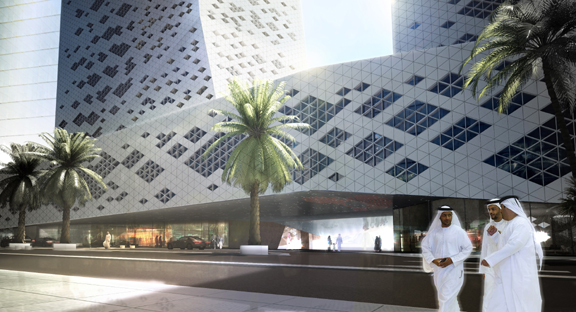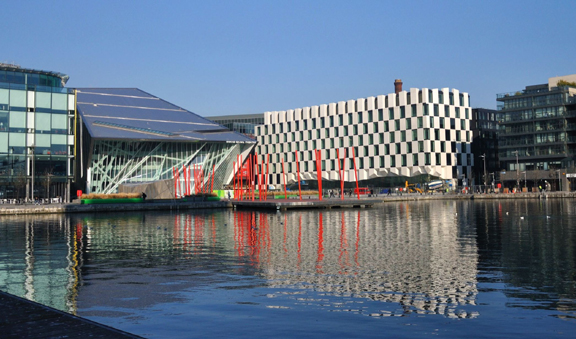Latest News
October 20, 2010


Amsterdam, the city of tulips and windmills, has an easygoing rhythm that could vex an anxious American traveler. Upon my arrival, I quickly learned to slow down, whether I wanted to or not. I had just discovered my U.S. laptop’s plug wouldn’t fit in a standard European outlet. I had but two hours of battery life left. So I could just run out and buy a converter, right? Not so fast, said the hotel concierge. It was Sunday. Most stores were closed. They would remain closed till midday Monday. He suggested I took a stroll along the canal two blocks away.
I’m among the 60 reporters Bentley Systems has invited to this year’s Be Inspired conference, where Bentley customers presented some of the best uses of the company’s technologies in infrastructure modeling. Featured projects have been selected as finalists for the annual Be Inspired awards and for inclusion in the company’s The Year in Infrastructure publication.
The infrastructure market, much like the canals of Amsterdam, requires methodical planning and flows at a slower pace. Bridges, buildings, and freeways cannot be pressed into service overnight. Sales cycles are longer. Projects take years. In 2009, the market dipped 7.1% from 2008, according to Daratech (2009 Architecture, Construction, Engineering, and Operations Software and Services Estimated Sales).
Club 500Have you ever wondered who the biggest stakeholders in infrastructure are? Bentley knows the answer. For the past 18 months, the company’s business intelligence division has been pouring over financial statements and earning reports to figure out 500 of the world’s top infrastructure asset owners (measured by reported net tangible fixed assets, according to Bentley).
Perhaps it comes as no surprise to find U.S. Government at the top of Bentley’s list, published for the first time this month. Uncle Sam’s infrastructure holdings are estimated at $282,700 millions. It was closely followed by Electricite De France SA - EDF (France) at $184,466 millions and by Joint Stock Company Gazprom (Russia) at $161,813 millions. Petrochina Company Ltd. (China) comes in at 4th at $155,973 millions.
The top owners as measured by Bentley show a diverse group, spanning from the U.S., Japan, China, France, and Russia to Sweden, Taiwan, and Mexico. Perhaps it might also surprise (or unsettle) you to know that the majority of the big owners are in the private sector, not public or government. Bentley plans to publish the list annually, much like the prestigious Fortune 500 list. For details, consult Bentley’s list here.
Many on this list, of course, are customers of Bentley and its main rival Autodesk. By Bentley’s own admission, Autodesk leads Bentley by a small margin. “We would like to overtake Autodesk,” said Greg Bentley in his keynote address. “We sure would like your help with that.” So what help does he need from those in the audience? “Autodesk asks you to use Revit [for BIM], Inventor [for mechanical modeling], their civil products, then leave you to stitch them together in NavisWorks. We’d like you to consider, in your future projects, the advantage that comes with Bentley’s single-platform approach,” he said.
This approach is the core of Bentley’s AssetWise initiative, launched in February 2010. It centers around Bentley’s comprehensive V8i portfolio. The whopping 148-title series encompasses the company’s flagship design package MicroStation; collaboration platform ProjectWise; plant management packages; storm water, waste water, and water management packages; roadway design software; geospatial software; and others.
Computational Design
If bricks and motors are the literal cornerstones of physical infrastructure, computational design, project coordination, and real-time visualization may be their digital counterparts in what Bentley describes as intelligent infrastructure.
Henning Larsen Architects, a Danish firm, is currently involved in two projects, both selected as finalists for Be Inspired awards. Nicknamed Crystal Towers, a 18-story-tall highrise and its 26-story-tall cousin, linked with a skyway, are under construction in downtown Riyadh, Saudi Arabia. Another, dubbed Villas in the Sky, is a proposed 34-story tower in King Abdullah financial district, also in Riyadh. They’re scheduled to be completed by 2013, just a little more than 2 years from now. In the latter, Henning Larsen used Bentley’s Generative Components software to explore and identify the best form and structure.
Morphosis Architects’ 41 Cooper Square project in New York, winner of the AIA California Council award and also a contender for Be Inspired, exemplified the tight negotiations between an owner’s limited budget, the architects’ vision, and the construction engineers’ pragmatic concerns. The semi-transparent atrium’s space envelope was dictated by the dimensions of the nearby floors and modifications done for code compliance. The structural nodes for the atrium were automatically generated using Bentley’s Generative Components software and computation scripts.
Computational design, also called script-driven design, is often used to automatically generate patterned surfaces, roof curvatures governed by a set of rules, or variations of the same basic shape. Because it harnesses the CPU’s ability to process and solve algorithms, computational design tends to be a more efficient method than manual modeling in these cases. It currently enjoys a robust following among architectural pioneers, but technologies like Bentley’s Generative Components are not limited to the architecture practice. It’s quite possible that the same approach may be used by automotive or consumer goods designers for similar purposes.

Coordination
Other Be Inspired finalists like McCauley Daye O’Connell and Zaha Hadid Architects rely on Bentley software’s collaboration functions to work with subcontractors, structural engineers, environmental analysts, and other team members working in different time zones and continents, using different CAD packages and data warehousing systems. As integrated project delivery or IPD (which encourages early contributions of knowledge and expertise from all disciplines involved in a project) gains popularity, so is the use of collaboration platforms like Bentley’s ProjectWise. A key aspect of ProjectWise transactions may be Bentley’s i-model, a format for exchanging infrastructure design geometry, business data, and change history.
Visualization
Bentley’s MicroStation is powered by Luxology rendering engine, the same one licensed by Dassault Systemes for its midrange mechanical modeler SolidWorks. Bentley’s rival Autodesk uses mental images’ mental ray rendering engine to power its architecture modeler Revit. Real-time rendering and animation have become a necessity in building and infrastructure as many firms use photo-realistic scenes and animations to explain their concepts to potential clients, sometimes also to address local authorities’ concerns over shadow casting, anticipated pedestrian and vehicle traffic, and neighborhood impact.
According to Jerry Flynn, Bentley’s project manager for visualization, Microstation users can also use i-models to produce renderings. (They won’t, however, be able to edit materials.) In upcoming V8i Select Series 3, users can also generate stereoscopic images and animations. Bentley, like Autodesk, is counting on the rise of 3D cities, mathematically accurate digital replicas of renowned cities. The trend has already begun, with cities like Quebec, Copenhagen, and Helsinki paving the way.
In the paper “3D City GIS - A Major Step Towards Sustainable Infrastructure,” Bentley product manager Benoit Fredericque writes, “Local governments are challenged by growing city populations, leading to increasing demands on local infrastructure. As existing infrastructure deteriorates in these dense urban areas, new infrastructure must be built, even though most areas of the world currently face decreasing financial and environmental resources.” This, he reasoned, might prompt a demand for “the use of 3D city geospatial information systems” to ” assist in sustaining infrastructure at the local level.”
In the case of 3D Copenhagen, Denmark authorities used Bentley’s MicroStation to capture and model the geometry of the city, comprising more than 130,000 buildings. Bentley’s proposed solution to those who are interested in developing 3D cities would be to integrate Bentley Maps, Bentley Geospatial Server, Bentley Descartes, and Bentley GeoWeb Publisher.
Be Inspired AwardsOn Wednesday October 20, Bentley announced the winners of its Be Inspired awards at a gala dinner. Visit this page to view the list of winners.
With new-found appreciation for the canal infrastructure of Amsterdam, I marvel at the city one last time before I bid farewell.
Disclosure: Bentley provided airfare and lodging for my attendance.
Subscribe to our FREE magazine, FREE email newsletters or both!
Latest News
About the Author
Kenneth Wong is Digital Engineering’s resident blogger and senior editor. Email him at [email protected] or share your thoughts on this article at digitaleng.news/facebook.
Follow DE





